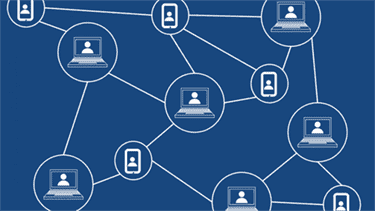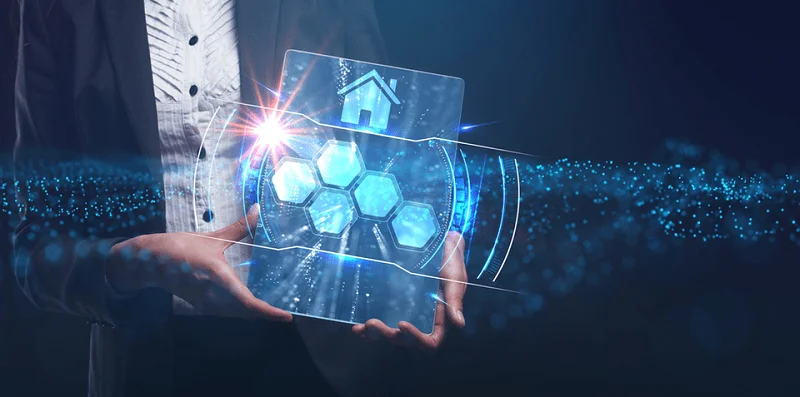Quality of Service (QoS) parameters corresponding to resource utilization, throughput, performance, response time, cost, and power consumption can all be enhanced with load-balanced fog layers. Edge computing is a subset of fog computing that includes processing data right at the level of creation. Edge gadgets include routers, cameras, switches, embedded servers, sensors, and controllers. In edge computing, the info generated by these devices are saved and computed on the device itself, and the system doesn’t look at sharing this information with the cloud. Only by figuring out what sources prospects want, where they need those assets, and when the support is needed can businesses reply to shopper demand shortly.

The common updates from the AGV can then be used for numerous functions including tracking the situation of inventories or materials being transported across specified zones. The elevated quantity of hardware could shortly lead to a certain quantity of ignored extra power consumption. Appropriate measures corresponding to ambient cooling, low-power silicon, and selective power-down modes must be applied to hold up vitality efficiency. The HEAVY.AI platform’s foundation is HEAVY.AIDB, the quickest open-source, analytics database on the earth. Using both CPU and GPU power, HEAVY.AIDB returns SQL query leads to milliseconds—even via the analysis of billions of rows of information.
Difference Between Edge Computing And Fog Computing
Many data analytics tasks, even critical analyses, do not demand the scale that cloud-based storage and processing offers. Fog computing eliminates the necessity to transport most of this voluminous data, saving bandwidth for other mission crucial duties. By moving storage and computing methods as near as attainable to the applications, elements, and devices that need them, processing latency is eliminated or tremendously reduced. This is especially necessary for Internet of Things-connected gadgets, which generate massive amounts of knowledge.
With fog computing, the fog layers act as a middleman between the user and the cloud. This signifies that the fog engine should know who is requesting the service, and the same authorization course of and insurance policies hold good here. It is finest to research the data in the distant place the place it was created, therefore fog computing is perfect for this. In different circumstances, the information is not from a single sensor but somewhat from a collection of sensors, such because the electrical energy meters in a neighborhood. In these circumstances, it’s preferable to course of and mixture the data regionally rather than to transmit the uncooked information in its entirety to keep away from overburdening the data transmission. So-called good manufacturing, greater than the interconnectedness of daily objects, presents new difficulties for established cloud architectures.

One way of doing it is utilizing information from wearables, blood glucose displays, and other health apps to search for signs of bodily misery. This data should not face any latency points as even a couple of seconds of delay can make an enormous difference in a important situation, corresponding to a stroke. Because IoT devices are sometimes deployed underneath tough environmental conditions and in instances of emergencies, conditions may be harsh. Fog computing can improve reliability beneath these situations, lowering the info transmission burden. Processing as a lot data regionally as possible and conserving community bandwidth means lower operating prices.
What’s Infrastructure As Code?
Fog nodes can detect anomalies in crowd patterns and automatically alert authorities if they notice violence in the footage. While cloud computing has turn into all-pervasive, fog computing is just coming up to handle the varied latency issues that plague IoT units. Whether in transmission or being stored, it is important to protect IoT information. Users can monitor and defend fog nodes utilizing the same controls, policies, and procedures deployed across the complete IT setting and assault continuum to offer enhanced cybersecurity. The structure’s objective is to locate primary analytic companies on the edge of the community, nearer to the place they’re needed. This reduces the distance across the network that users should transmit knowledge, bettering performance and total community effectivity.

Enterprises are most likely to go for a centralized strategy with technical infrastructure as administration becomes straightforward. Setting up a decentralized set of heterogeneous fog gadgets throws up new challenges in terms of upkeep and compatibility. Other industries that use fog computing embody retail, oil & fuel, government & navy, and hospitality. Personal assistants similar to Siri and Alexa can be found throughout devices and are suitable with most, corresponding to smartwatches. This flexibility and presence imply that we will rely on fog computing to turn into a vital part of varied trade verticals. Any enterprise that provides real-time options might need to incorporate fog computing into its current cloud infrastructure.
What Are The Applications And Use Cases For Fog Computing?
This solution can improve the performance of IoT functions by lowering latency and ensuring information is processed locally. Smart transportation networks are one other example of a fog computing utility. Each related car, traffic gadget, and even road on this type of grid generates a stream of data. Obviously this implies an incredible amount of information analysis in real-time is important to avoid accidents, and a fog computing approach is crucial to sharing the limited mobile bandwidth that’s available.
The great thing about fog computing lies in tying collectively diversified hardware and software program. When a flexible interfacing program isn’t available for this linking, issues can get messy rapidly. Web-based services and APIs must be created whereas keeping new bodily and digital sensors in mind. Besides integration with other fog nodes, the fog engine must additionally seamlessly integrate with the prevailing cloud answer. Fog computing is a decentralized infrastructure that locations storage and processing parts on the edge of the cloud, the place knowledge sources corresponding to utility users and sensors exist. Remember, the goal is to have the power to course of data in a matter of milliseconds.

This is commonly carried out to improve efficiency, though it may additionally be done for security and compliance reasons. Finally, fog computing delivers cloud capabilities to the edge of networks, growing efficiency, reducing latency, and improving knowledge processing capabilities. It is perfect for real-time information analysis, low-latency purposes such fog computing vs cloud computing as IoT, and conditions where knowledge privateness and security are crucial. While it supplies scalability and lower bandwidth utilization, it also has issues in managing knowledge congestion and rising energy consumption. Fog computing is making progress in applications similar to healthcare monitoring, industrial IoT, and real-time analytics throughout a big selection of industries.
What Is The Safety Of Fog Computing?
It may also be used to offload computationally intensive duties from centralized servers or to offer backup and redundancy in case of community failure. Security is a crucial issue for fog computing, because fog-based services are supplied to massive-scale finish customers by entrance fog nodes/servers. The faster the information is processed, the better the experience for customers. This also implies that staff do not must operate on a choked-up community, and firms needn’t pay insane amounts for extended cloud storage.

Finding the proper kind of hardware and software program to go together with each sensor is essential. While it could be tempting to over-engineer and add sophisticated gadgets on the fog degree, the goal is to ensure minimum hardware and software footprint. Anything more will result in an costly middle-level computation that can become a security liability. The role of each sensor and the corresponding fog node must be rigorously thought-about. The lifecycle of each fog element may be automated to be dealt with from the central console.
Empowering Pharma Four0 With Edge Computing
Edge computing is actually a subtype of fog computing that signifies that data is generated, processed, and stored shut together. Fog computing consists of edge processing as properly as the necessary infrastructure and network connections for transporting the information. The aim of edge computing is to bring the info sources and gadgets closer collectively, eliminating the time and distance to course of. In principle, this in turn improves efficiency and speed of functions and units. Fog computing is a computing architecture in which a collection of nodes receives information from IoT devices in actual time.
It was supposed to bring the computational capabilities of the system close to the host machine. After this gained slightly reputation, IBM, in 2015, coined a similar time period known as “Edge Computing”. Catching threats at the fog stage even before they hit the main cloud infrastructure is the most effective security process that could be included. The safety element of the fog engine must even be tuned to spot anomalies in application and person conduct. With so many disparate elements concerned, it is easy to overlook hardware- or software-specific vulnerabilities. All safety updates and patches have to be applied with a set course of and schedule in place.
- Any enterprise that offers real-time options will need to incorporate fog computing into its present cloud infrastructure.
- It can be used to dump computationally intensive tasks from centralized servers or to provide backup and redundancy in case of network failure.
- They can establish accidents or congestion immediately, permitting authorities to respond faster and hold the city operating smoothly.
- Ginny Nichols, a product line manager for Cisco, first used the phrase “fog computing” in 2014.
- Personal assistants similar to Siri and Alexa are available across gadgets and are appropriate with most, such as smartwatches.
The most critically time-sensitive knowledge ought to be analyzed as close as possible to where it’s generated, inside verified management loops. Connected manufacturing devices with cameras and sensors present another nice instance of fog computing implementation, as do techniques that make use of real-time analytics. Fog computing maintains a few of the features of cloud computing, the place it originates.
These devices are knowledge turbines and can span a big spectrum of expertise. This means they could have varying storage and processing capacities and completely different underlying software and hardware. This is because both fog and cellular edge computing aim to reduce latency and improve efficiencies, but they process knowledge in barely totally different areas. Edge computing sometimes happens instantly where sensors are attached on units, gathering data—there is a bodily connection between information source and processing location.
This data allows organizations to make knowledgeable decisions and shield themselves from vulnerabilities at each, business and technological ranges. HEAVY.AIDB delivers a combination of superior three-tier reminiscence administration, query vectorization, rapid question compilation, and support for native SQL. With extreme big information analytics performance alongside those benefits, the platform is right for fog computing configurations.
Other organizations, together with General Electric (GE), Foxconn and Hitachi, additionally contributed to this consortium. The consortium’s major targets have been to both promote and standardize fog computing. The consortium merged with the Industrial Internet Consortium (IIC) in 2019. Cisco, Microsoft, Dell, Intel, Arm, and Princeton University collaborated to develop the OpenFog Collaboration. General Electric (GE), Foxconn Technology Group, and Hitachi are extra companies that participated within the partnership. The consortium’s main targets have been to advertise and standardize fog computing.
Does Fog Help Iot Concept?
Those gadgets experience far less latency in fog computing, since they’re closer to the data supply. The term fog computing, originated by Cisco, refers to an different to cloud computing. Autonomous vehicles essentially perform as edge gadgets due to their huge onboard computing power. These automobiles must be ready to ingest information from a huge variety of sensors, perform real-time data analytics and then reply accordingly.
Grow your business, transform and implement technologies based on artificial intelligence. https://www.globalcloudteam.com/ has a staff of experienced AI engineers.
